The contributions from Engineers Australia’s volunteers make a real difference to engineering and the world — and these engineers are building their own careers in the process.
Those who volunteer for various roles on behalf of Engineers Australia don’t just carry out essential tasks.
They share and gain best-in-class knowledge. They have enormous and positive influence on the future of engineering, and on related professions, sectors and industries. And they earn powerful respect among a broad network of thought leaders, policymakers and industry groups.
This National Volunteer Week, which begins 17 May, Engineers Australia is celebrating its volunteers and their impact. These stories from the volunteering front lines illustrate a little of what volunteers do, and why they do it.
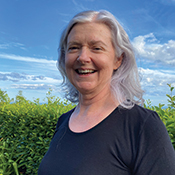 Education
Education
Fae Martin FIEAust CPEng, the accreditation panellist
Volunteering for Engineers Australia has been a “fantastic learning experience” for Associate Professor Fae Martin FIEAust CPEng, Deputy Dean of Learning and Teaching of the School of Engineering and Technology, Central Queensland University. Along the way, she has expanded her network and gained deep insight into best practice in her field.
“It doesn’t only help you to get a great view of what other institutions are doing,” said Martin, a member of several Engineers Australia accreditation panels. “Importantly, it helps you to look at yourself and your own organisation’s processes from a different point of view.
“When you’re inside a system, you look at things a particular way. But suddenly, when you’re outside that system, you see things a very different way.”
Martin also said the experience of being on the accreditation panels, which involves visiting educational institutions and working with them to ensure they meet accreditation requirements in terms of educational quality, processes and content, has offered enormous personal benefits.
“Not only am I a lot better at my job now, as a result of my experience on the accreditation panels, but it has grown my confidence,” she said.
The role also involves analysing documentation provided by institutions, video conferences with other members of the panels and discussions with stakeholders and other groups.
“As a woman in engineering, when I was younger, I was not very confident,” she said.
“Engaging in these sorts of activities has helped me to realise that I have something important to give to the profession.”
Technical societies and colleges
Peter Statton FIEAust CPEng, the college chair
Engineers Australia hosts several technical colleges, each specialising in a discipline of engineering. Each college oversees and contributes to the development of knowledge in its field.
In turn, the colleges help to guide standards groups, educational institutions, industry bodies and regulators, policymakers, and continuing professional development.
Peter Statton FIEAust CPEng, Structural Engineering Technical Executive within WSP’s Bridges, Maritime and Structures group, chairs the Australian National Structural College Board.
“The Structural College provides benefits to engineering on several fronts,” Statton said.
“Our high-level purpose is to help drive continuous improvement within our profession so that the infrastructure we design is safe, resilient and ready for today’s standards and tomorrow’s challenges.”
The College National Board and Branches’ elected volunteer bodies comprise technical leaders who help instigate reform and influence future direction of structural engineering in Australia. They do this by helping Engineers Australia shape its policies and member service strategies, formulate responses to government policy, advocate best practice and acknowledge engineering achievements.
“For example, recently we advocated for Engineers Australia’s formal support of CROSS-AUS as part of a global organisation by IStructE that shares lessons learnt through collaborative reporting to improve safety of structures,” Statton said.
Bodies such as the colleges are more important now than ever, given the rapid rate of regulatory reform dealing with the impact that the changing climate, as well as society, technology and resources, will have on infrastructure.
Statton began volunteering with the South Australian branch of the Structural College a decade ago, then moved to the national body.
“I have found it to be extremely rewarding working with peers in the industry to influence change,” he said.
“Having a positive impact on the future of the industry is rewarding, as are the resulting significantly enhanced professional networks.”
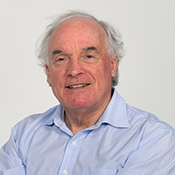 Mentoring
Mentoring
James Trevelyan FIEAust CPEng, the mentor
Several years ago, James Trevelyan FIEAust CPEng recognised a disconnect between the expectations of young engineers and their actual experience.
He began his own systematic research on engineering practice — or “what early career engineers actually do” — and realised very few organisations, and even fewer young engineers, got it right.
“The challenge I found with most companies I’ve interacted with, through the course of this research over 20 years, is that most of them really don’t have a clue what the young engineers need to learn,” said Trevelyan, who is now an Emeritus Professor at the University of Western Australia and CEO of air conditioning firm Close Comfort.
“We did some research following engineering students as they went into their careers. There was a very clear finding that graduates who were on formal development programs were less satisfied with their employers.”
Why? Because they were forced into courses on topics such as team skills, contract negotiation, people management and budget management — all topics they didn’t consider to be “real engineering”.
“When I interviewed them, many engineers would start the conversation with something like, ‘Why on earth are you coming to me for an interview about what engineers do? I hardly ever do any engineering!’,” Trevelyan said.
From this research, he wrote a book called Learning Engineering Practice, which guides expectations of young engineers and their employers as they head into professional practice. Using the material and processes outlined in his book, Trevelyan has since been mentoring several students and young engineers.
It’s not the first time he has volunteered his expertise. Trevelyan has worked on Engineers Australia committees for decades, including the National Committee on Applied Mechanics in the 1980s and 1990s, and as the Founding Chair of the National Committee on Mechatronics from 2006 to 2012.
“The vision for the book is that not only does it help young engineers and their supervisors,” he said. “But also these young engineers, if they really pay attention to what’s in the book, should be far more productive and far more valuable for their employers.”
 Diversity and inclusion
Diversity and inclusion
Trang Pham MIEAust, Women in Engineering committee’s immediate past chair
The purpose of an Engineers Australia committee such as Women in Engineering is to create community, said Trang Pham MIEAust, civil engineer at Aurecon and the committee’s immediate past chair. It is about creating a space where women can connect, and it is supported by four pillars: support women, celebrate women, retain women and attract women.
“This is important because engineering is a cornerstone of communities and societies,” said Pham, who is also a member of Engineers Australia’s Civil College Queensland and Women in Engineering representative for Engineers Australia’s Queensland Division Committee.
“Everyone uses the facilities that engineers create every day. If we don’t bring different perspectives, different ideas, different backgrounds and truly creative designs, we’re not creating a world where everyone is welcome.
“How can we say we’re making the world a better place when we’re not engaging with everyone?”
Women, Pham said, are tired of organisations’ virtue signalling. They’re now expecting concrete actions and ideas.
“We’re looking for the big issues to be addressed rather than skirted around,” she said.
“Everyone has an idea of the final destination we want to reach, where men and women are treated equally. But everyone has very different ideas on how to get there. So, Women in Engineering is facilitating those conversations.”
Once greater diversity is achieved in engineering — and this will be further boosted by the work of Engineers Australia groups like InterEngineer and the Indigenous Engineers Group — the ability of engineers to solve increasingly complex problems will be dramatically improved.
“Bringing in diversity brings in perspective,” Pham said.
Why does Pham volunteer so generously?
“It makes me part of a community,” she said. “But I’m also passionate about it because I’m a woman of colour. Barriers for me to succeed have been much higher, and I want to make sure I create change, to give to people opportunities that I never had.”

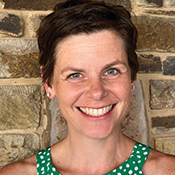 Advancing the profession
Advancing the profession
Elissa Fazio FIEAust CPEng and Brett Fairweather MIEAust, the building panellists
Anybody in the community can lodge a proposal for change to the National Construction Code, as can anybody working in the construction sector.
When these proposals come through, they are read by members of the Building Codes Committee (BCC) and discussed in one of several regular meetings each year. That committee then sends recommendations to the Australian Building Codes Board.
The Engineers Australia representative on the BCC is Elissa Fazio FIEAust CPEng, National Operations, Risk and Compliance Manager at News Corp Australia.
“I’ve been volunteering in this capacity for six years, and right now there are some very exciting changes happening,” Fazio said. “A lot that has been talked about for 10 or 15 years is now becoming a reality.
“It’s great to be a part of, but volunteering helps in other ways. It keeps me connected to what’s going on. You can develop tunnel vision because you’re only looking at your own expertise area. Also, I have always wanted to make a positive difference. Volunteering enables me to do that.”
Brett Fairweather MIEAust, mechanical engineer at consultancy It’s Engineered, agrees that there are benefits, sometimes surprising ones, to volunteering for Engineers Australia.
“One benefit I wasn’t expecting was the way it broadened my network,” said Fairweather, who is on Engineers Australia’s Building Reform Expert Panel for the New South Wales Building Commissioner.
“We share and discuss ideas and, on behalf of Engineers Australia and all engineers, provide valuable input into the building industry. It’s so much better than just being an individual, standing in a corner, screaming about something you’re passionate about.
“The advice and guidance we’re giving to the Office of the Building Commissioner means they have the opportunity to gain the best understanding of engineering, and of how engineers are involved in the industry.”
Fairweather said he set up his consultancy when his volunteering and industry contribution roles were growing and the industry was seeking more of his support.
“There are times where half my time I can’t invoice for,” he said.
“But, fortunately, this industry has an incredible way of supporting people who are willing to contribute.”
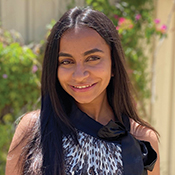 Hetal Shah, the student ambassador
Hetal Shah, the student ambassador
A student ambassador for Engineers Australia at the University of Western Australia, third-year chemical engineering and finance student Hetal Shah is passionate about Engineers Australia’s offerings.
What does the student ambassador role involve?
I’m part of a team that connects students across universities in WA to Engineers Australia. We’re the voice on campus.
Why is this role important?
Engineers Australia can help kickstart our careers at an early stage. There are so many benefits that Engineers Australia provides. As an organisation, it can give you direction in your career, it can connect you with other engineers; it offers access to continuing professional development, job boards, webinars and events; and much more. And so many Engineers Australia events in Australia are free for students.
What do you get out of volunteering?
By being a part of the Engineers Australia community, and through events I’ve attended, I’ve been able to gain great insight around what I should expect in my career, and goals I should be aiming for. I’ve been inspired by engineers to recognise how engineering is trying to make the world a better place.


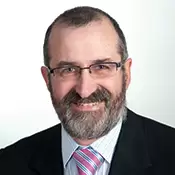


Dear Madam/Sir
Please let me know, how I can start to do volunteering work.
Regards
Masoud Babazadeh
Hi Masoud,
Thanks for your interest. For volunteer office bearer positions on Boards or committees, keep an eye out in the second half of the year for email notifications of opportunities to stand for election or to submit an expression of interest. You can also contact the General Manager of your local Division to discuss informal opportunities and groups active in your areas of interest.
Best,
Ruth
how I can start to do volunteering work
Hi Mohamed,
Thanks for your interest. For volunteer office bearer positions on Boards or committees, keep an eye out in the second half of the year for email notifications of opportunities to stand for election or to submit an expression of interest. You can also contact the General Manager of your local Division to discuss informal opportunities and groups active in your areas of interest.
Best,
Ruth
How can I start voluntary work.
Hi Subash,
Thanks for your interest. For volunteer office bearer positions on Boards or committees, keep an eye out in the second half of the year for email notifications of opportunities to stand for election or to submit an expression of interest. You can also contact the General Manager of your local Division to discuss informal opportunities and groups active in your areas of interest.
Best,
Ruth